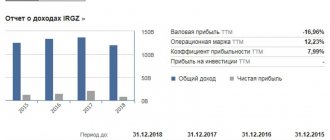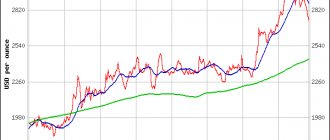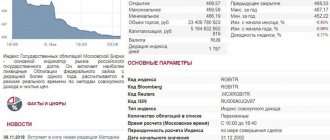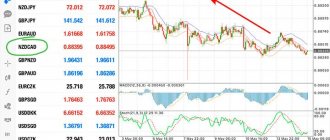Good afternoon. In today’s review, I will touch on the topic of Xiaomi shares on the stock exchange: where you can find these securities and whether it is worth contacting them at all. Xiaomi has quickly risen to the top of the ultra-crowded Chinese market and become one of the most valuable IT companies in the world.
It specializes in smartphones and consumer electronics, and its products account for more than 10% of global sales of mobile gadgets. Thanks to such rapid growth, Xiaomi shares on the stock exchange entered into direct competition with Apple, Samsung and other giants of the Hi-Tech industry.
Business Overview.
Xiaomi operates in three business segments: smartphones, Internet of Things and lifestyle products, and Internet services.
Xiaomi is the fourth largest smartphone manufacturer in the world with a market share of 11% in the first quarter of 2021. It consists of two independent brands to cater to the needs of different market segments.
The Redmi brand targets price-sensitive consumers with products with good features and affordable prices. The Xiaomi brand targets the high-end segment of premium phones with high-end hardware.
The group also sells a wide range of smart devices and lifestyle products that can be connected to its Mi Home app, forming an IoT ecosystem. The main products here are smart TVs, wristbands, smart voice assistant and consumer electronics items such as refrigerator and air conditioners. The company has one of the world's largest Internet of Things platforms with 252 million connected devices.
The internet services segment includes fintech, advertising, native Mi User interface, mobile gaming platforms and e-commerce. Revenue mainly comes from advertising services and games.
The revenue breakdown for 2021 shows that smartphones took up 59% of total revenue, followed by Internet of Things with 30% and Internet Services with about 10%.
Latest financial reports.
Xiaomi delivered a strong first quarter result despite the Covid-19 pandemic. Revenue increased 13.6% year-on-year to 49.7 billion yuan. Operating profit of 2.3 billion yuan was 35% lower due to higher marketing expenses and foreign exchange losses.
Gross profit, a key measure of Xiaomi's hardware cost control, increased 45% to 7.6 billion yuan. This increased its gross margin to 15%.
Each of Xiaomi's three segments saw higher sales to varying degrees. Revenue from smartphones grew by 12.3%, Internet of Things and lifestyle products grew by 7.8%, and Internet services grew by 38.6%.
Overall, Xiaomi's performance was satisfactory compared to the virus outbreak that locked down much of China in February and March.
About company
Xiaomi is a Chinese electronics and software manufacturer headquartered in Beijing, founded in 2010 by entrepreneur Lei Jun. It is the world's 5th largest smartphone company that designs, develops and sells smartphones, mobile apps, laptops and consumer electronics.
The company's first smartphone (Xiaomi Mi1 Smartphone) in August 2011 quickly became popular in China. Chinese gadgets come with Xiaomi MIUI firmware based on Android, which was actually developed as a competitor to TouchWiz from Samsung, and iOS from Apple.
Xiaomi has 15,000 employees. The company's facilities are located in China, India, Malaysia, Singapore, Indonesia, the Philippines and South Africa.
The phenomenon of Xiaomi and its shares is due to the fact that the company sells products almost at cost with a profit margin of 1 or 2% (maximum 5%). The main income comes from monetizing the additional ecosystem.
Lei Jun puts it this way: “We sell our smartphones at affordable prices, but if you use our browser or use our online services, we make a profit. And this is an honest approach."
As can be seen, Xiaomi's pricing strategy is working superbly, turning the Chinese company into the top brand in the subcontinent with a 27% global market share (according to Canalys data).
Production of the company
Xiaomi produces smartphones and other devices. Its main categories today:
- smartphones;
- tablets;
- laptops;
- wearable devices;
- TVs;
- routers.
There are also products that deserve special attention. In particular, these are:
- MiCloud. Cloud storage and cloud computing service. Allows users to store data (contacts, messages, photos, notes, media files) on remote servers for easy access from all MIUI devices. The service also includes a feature for tracking the location of your device, as well as remotely locking it.
- MiTalk. Mobile messaging application. Available today for Android and iOS. Launched 2011.
- MiPower Bank. Branded Chinese drives. Available in capacities of 5000/5200/10000/10400/16000/20000 mAh.
- Mi Drone. Quadcopter. It has a range of 2 km and is capable of supporting a video stream in 720p format.
- Xiaomi Smart Home. This is an entire category of products, including more than 70 items - from pillows to air purifiers, rice cookers, robotic vacuum cleaners and other products.
Main shareholders
| Name/Title | Package of shares (pcs.) | % shares |
| Morningside Group Ltd. | 2 810 047 109 | 16,3% |
| Lei Jun | 2 661 517 010 | 15,5% |
| Apoletto Managers Ltd. | 1 449 637 550 | 8,43% |
| Qiming Venture Partners Ltd. | 832 575 500 | 4,84% |
| Lin Bin | 391 233 610 | 2,27% |
| Capital Research & Management Co. (World Investors) | 181 927 800 | 1,06% |
| Capital Research & Management Co. (Global Investors) | 111 036 352 | 0,65% |
| The Vanguard Group, Inc. | 63 597 940 | 0,37% |
| BlackRock Fund Advisors | 38 545 200 | 0,22% |
| CAPFI DELEN Asset Management SA | 17 563 200 | 0,10% |
Key figure and her role
- Lei Jun. Founder and CEO of the company. Owns the largest block of shares.
- Bin Lin, co-founder of Xiaomi Corporation. Currently the President and CEO of this company.
- Jane Manu Kumar (Vice President, Global Markets).
Affiliated companies
- Yi Technology. Produces cameras and video analysis technologies. Initially operated under the Xiaomi brand, it separated from it in October 2021. However, the parent company still owns a controlling stake in Yi Technology.
- Rigo Design. It was founded in 2008 and has collaborated with several companies in the past, such as Microsoft, Lenovo and SHARP. In addition to mobile devices, he develops user interfaces for software and websites, as well as related digital products. Today Rigo Design is an independent company within Xiaomi.
- Beijing Duokan Technology Co., Ltd. Develops and sells Internet applications for the Kindle, Android, iOS and AppleTV platforms, and also runs the Duokan bookstore. Since 2012 it has been part of Xiaomi.
- Jiefuruitong Co., Ltd. Provides payment processing services. Joined the team in 2021.
Company plans for the future
The plan for the next 5 years is to invest $1.5 billion in smart homes. The Chinese company, known for its budget smartphones, is betting big on the future of the Internet of Things. In particular, Chief Operating Officer Lei Jun said that at least 10 billion yuan or 1.48 billion US dollars will be invested in the AioT sector in the next five years.
AioT is short for “AI+IoT” or smart devices connected to the Internet of Things. AIoTs are intelligent, run on automated systems, and can learn from user habits using neural network technology.
“We envision a future in which every device in the home is connected to the internet and controlled by voice. Simple household appliances will be replaced by smart devices. There will be an AIoT network that permeates every second of people's lives, collecting mountains of users, traffic and data,” Lay said in his annual message to employees.
The plan is to turn Xiaomi's Chinese operating system into a digital platform that will control gadgets ranging from smartphones and tablets to self-driving drones and home appliances.
Thus, Xiaomi is coping with the weakening of the Chinese smartphone market. Smartphone shipments fell more than 15% in 2018 compared to the same period last year, according to a Chinese government-backed research institute. And although they remain strategically important for Xiaomi, the plans of the Chinese IT giant go far beyond this market.
Dividend statistics
Xiaomi became a public company only in July 2021, so there is no talk of any stable dividend policy for shares yet. Moreover, the presentation of the Chinese company at international auctions did not go well. For now, this asset cannot be recommended to those who plan to earn money from dividends on shares.
Interesting facts about the company
- Name. When translated literally, "Xiaomi" literally means "rice" or "small rice", which is actually a reference to a Buddhist concept. This means that Xiaomi starts with small things and strives for the top. "Mi" is also an abbreviation for the English "Mission: Impossible" (we're not talking about the movie!). This represents the impossible obstacles that the company's founders overcame on the path to success.
- Mascot. The mascot is a rabbit named Mitu, who wears earflaps (Lei Feng's hat). Mi Bunny's hat has a red star and a red scarf is worn around his neck. Isn't that cute?
- Brand stores. Xiaomi does not operate physical stores outside of China and Singapore. Virtually all global trade is conducted online. This helps keep costs down further to keep the price tag affordable.
- Guinness World Record. Xiaomi sold 15,000 Mi3 smartphones in just two seconds in India. Two seconds! Imagine the load the company’s servers could withstand at that moment. In 2014, the Guinness World Record was broken with 2.1 million smartphones sold in just one day.
- Google's influence. Three of the nine leadership positions are held by former Googlers. Is there some connection here? All we can say for sure is that these guys are very talented, Xiaomi’s success is largely due to them.
Historical income.
Over five years, Xiaomi's revenue grew at 32% per year and reached 206 billion yuan last year. Gross profit increased at an even faster rate of 80% per year to reach 28 billion yuan.
Xiaomi has done a good job of controlling the cost of goods sold and increasing the overall retail price of the product, judging by its gross margin, which increased from 4% in 2015 to 14% in 2019.
However, Xiaomi has a spotty record when it comes to cash flow from operations, with 3 years of net outflows in the last 5 years. This figure fluctuated between an outflow of 2.6 billion yuan (2015) and an inflow of 23.8 billion yuan (2019).
Where and how to buy shares today
Private individuals have been able to purchase shares of the issuer since last summer. After the change in trading rules, Xiaomi became one of the first to be allowed to enter the Hong Kong Stock Exchange.
Through a foreign broker
American investors were among the first to start working with the shares of this company.
You need to be prepared that entering this market requires substantial capital. The minimum amount is 10 thousand dollars.
Verified foreign brokers
| Name | Rating | pros | Minuses |
| Interactive Brokers | 8/10 | They speak Russian | Subscription fee 10$\month |
| CapTrader | 8/10 | No monthly fee | They only speak English |
| Lightspeed | 7/10 | Low minimum deposit | Imposing services |
| TD Ameritrade | 6.5/10 | Low commissions | Not everyone gets an account |
Through a Russian broker
You can buy Xiaomi shares through any domestic broker certified on the Hong Kong Stock Exchange.
Reliable Russian brokers
| Name | Rating | pros | Minuses |
| Finam | 8/10 | The most reliable | Commissions |
| Opening | 7/10 | Low commissions | Imposing services |
| BKS | 7/10 | The most technologically advanced | Imposing services |
| Kit-Finance | 6.5/10 | Low commissions | Outdated software and user interface |
Through a foreign subsidiary of a Russian broker
This is an option for those who do not want to use the services of Russian companies when buying Xiaomi shares. With the offshore subsidiaries of Russian brokers, you can count on freer conditions, as well as tax benefits.
Directly from a company, individual or firm
This is a difficult option. It is easier to use the services of a broker. Russians, like all other foreigners, can start trading on the Chinese stock market only after obtaining official access to the Hong Kong Stock Exchange.
Smartphone segment.
A year ago, Xiaomi adopted a dual branding strategy. Management may have realized the need to shed Xiaomi's image as a low-cost phone maker by devoting more marketing resources to the premium segment.
The strategy appears to be working on the back of Xiaomi's rapid growth in smartphone sales in the first quarter, helped by the launch of several premium 5G models. The average selling price of Xiaomi smartphones increased by 7.2%, and gross profit jumped from 3.3% to 8.1%.
Xiaomi POCO X3.
Xiaomi was also the only company to buck the trend of slowing smartphone shipments in the first quarter with an increase of 9%.
Exchange rate dynamics for all time
Quotes from TradingView
If you look at the overall dynamics of Xiaomi shares over the entire period, a disappointing picture emerges. After the unsuccessful IPO, their price on the exchange only declined from HK$25.45 when trading began to HK$9.58 per share today.
But two factors need to be taken into account:
- the shares were floated at the height of the US-China economic wars;
- the company was listed on the Hong Kong Stock Exchange, which at that time was just going through changes in trading rules.
Therefore, in general, Xiaomi shares are a greatly undervalued asset on the stock exchange.
Strengths and opportunities.
Xiaomi's business model includes three synergistic segments that create network effects. High-quality products generate high sales, which convert consumers into users of Xiaomi's online services and platforms. They provide valuable data on consumption patterns and preferences that improve the group's monetization capabilities, increasing revenue from Internet services. This perpetuates repeat purchases and further increases user stickiness.
The group's high operational efficiency has resulted in significant cost savings, allowing it to price its products competitively. Xiaomi uses mainly online sales channels to reach customers directly and reduce distribution costs. Its products are sold on Mi Store and Youpin, its self-managed e-commerce platforms, as well as third-party platforms such as JD.com and Tmall.
Xiaomi has a first mover advantage in the rapidly developing Internet of Things market. According to an iResearch report in Xiaomi's IPO prospectus, global IoT hardware sales will grow at a CAGR of 26.1% to reach $1.55 trillion in 2022. The group began building its Internet of Things business in 2016 and is now one of the largest consumers in the world. This gives the group good opportunities for further growth.
Number of Xiaomi Internet of Things consumers.
Flaws.
Xiaomi depends on suppliers for key hardware components. Notably, Qualcomm is the largest supplier of processor chips, the most important component of a mobile phone. This is a serious risk in the current political climate, where conflicts regularly arise between China and the United States. If Xiaomi faces any restrictions on exporting chips from Qualcomm, the quality and availability of its phones will be affected.
Xiaomi's reliance on smartphone sales has shaped the market's perception of it as a hardware company that has high capital costs and low margins compared to a pure-play internet services and platform company. As a result, Xiaomi's market valuation with a price-to-earnings ratio of 28 (P/E) is conservative despite its rapid growth. Xiaomi's smaller business segments must expand aggressively to have a higher market value that benefits shareholders.
Conclusion.
Xiaomi has established itself well in the global smartphone market with its latest premium products and affordable yet quality models. The company has also established a strong position in the budding Internet of Things industry.
However, it is heavily dependent on smartphone sales, resulting in stiff competition in the industry with players such as Samsung, Huawei and Apple. With the rapid development of technology, Xiaomi needs to work tirelessly to protect its market share.
For growth stocks, investors should be wary of signs of slowing revenue and earnings growth, which could potentially cause its share price to drop significantly.
Therefore, Xiaomi is suitable for investors with a large risk appetite who want capital growth. Careful monitoring of industry trends, market news and earnings is important for a successful investment in a company.
Where and how to buy shares?
The company's shares are listed on the Hong Kong Stock Exchange (HKEX) and not all brokers, especially Russian ones, have access to it. If you have an Interactive Brokers account, then there are no problems with access to stocks. It is enough to enter the ticker (the name under which the shares are traded on the stock exchange) in the search. Read how to open an account with Interactive Brokers here.
The price of shares is indicated in Hong Kong dollars, so before purchasing, you need to convert the base currency into the required amount of Hong Kong dollars.
Xiaomi shares with ticker 1810 on the Hong Kong Stock Exchange.
Securities data
| Name | Xiaomi Corporation |
| Year of foundation | 2010 |
| Founded by | Lei Jun |
| Headquarters | Beijing |
| Denomination | 9.22 HKD |
| Dividends (yes/no) | No |
| Ticker | OTC:XIACF OTC:XIACY HKEX:1810 |
| Trading platforms and trading times | 09:30-16:00 and from 19:00-01:00 (local time) |
| Number of securities in circulation | 32 918 061 887 |











